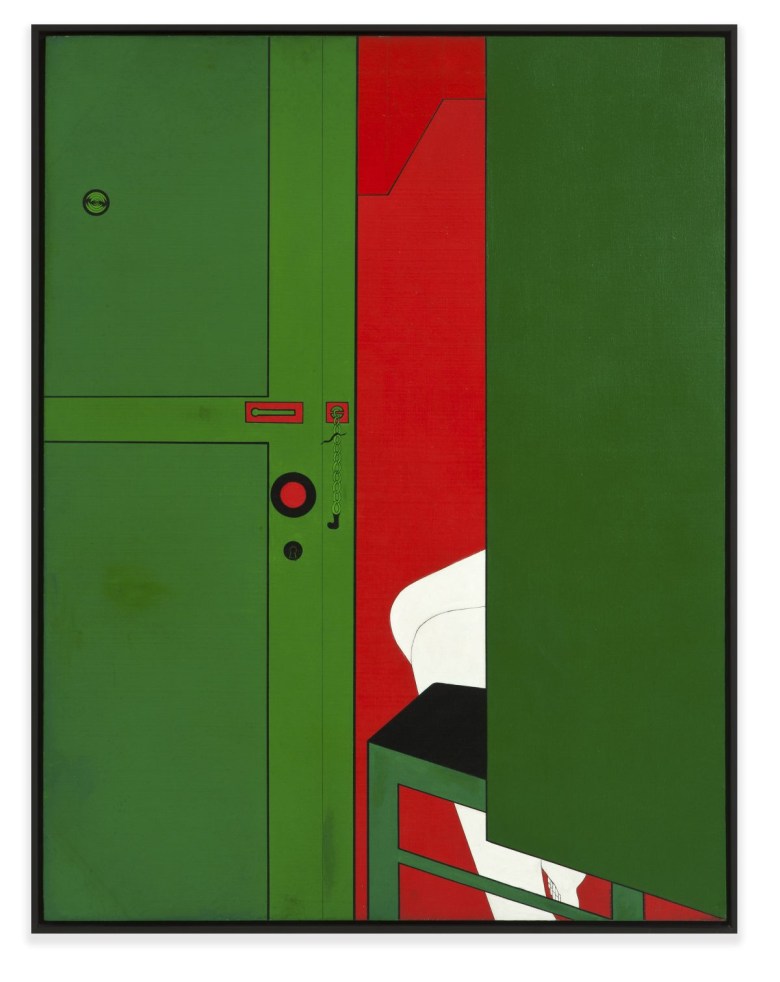SÃO PAULO — Most observers of Latin American art are probably familiar with Lygia Clark, the Brazilian artist who took part in the Concretist and Tropicália movements and was the subject of a 2014 retrospective at New York’s Museum of Modern Art. Clark is one of a handful of Brazilian women artists — among them Lygia Pape, Mira Schendel, and modernists Tarsila do Amaral and Maria Martins — who have garnered international attention in the past decade. Their renown, however, often obscures the fact that many other Brazilian women artists are still overlooked at home and abroad. It’s refreshing, then, to see a number of recent gallery shows and museum surveys in São Paulo rectifying historical gaps and painting a fuller picture of Brazil’s art landscape.
With a compact catalogue and a beautiful show design at Galeria Superfície, Women of New Figuration, curated by Camila Bechelany and Gustavo Nóbrega, highlights a number of noteworthy yet underappreciated women artists. Several of them took part in the New Figuration movement, which surged in Brazil in the 1960s to overcome the strictly abstract Constructivist movements of the previous decade. Similarly to Tropicália, New Figuration centered on the body, melding abstraction and figuration. The movement kicked off with two key exhibitions: Opinion 65 in Rio de Janeiro, and Proposition 65 at Fundação Armando Álvares Penteado art school in São Paulo. Both shows and their offsprings featured few women; of the 33 artists in the influential Opinion 65, only one, Vilma Pasqualini, was a woman.

Borrowing loosely from American Pop art’s plastic language and turn to graphic arts, New Figuration was similarly engaged in political critique. This same emphasis permeated Superfície’s show, which wrapped up in October. Some of the works evoke fear and repression after the military junta’s takeover in 1964. For instance, Ana Maria Maiolino’s grim 1966 etching titled “The Hero” depicts a skeleton in a military uniform, while Pietrina Checcacci’s somber series of acrylics on hemp, The Brazilian People (1967–1968), portrays deconstructed anonymous figures of what appear to be upper-middle-class men and women (many of whom favored the regime at the time). Other works criticize conservatism’s enshrinement of womanhood as primarily devoted to childbearing, as in Maiolino’s pastiche-tinged wood and acrylic on Eucatex, “The Family” (1966).
Even more notable are the works that eschew overt political messages but nevertheless underline scenes of domesticity and intimacy. Wanda Pimentel’s acrylics from the series The Involvement (1969) haunt with their quiet, staged scenes in which mysterious interferences and accidents are revealed through doors left ajar. In one, a female body is but a suggestion of pale legs seen through the crack in the door, suggesting a solitary figure sitting on a bed. In another work by Pimentel, a leaky faucet spews white liquid, which transgresses the composition’s black border — a visual pun in which the leak is both literal water and, at the same time, paint. Judith Lauand’s acrylic painting “Woman Smoking” (1969) and Yolanda Freyre’s “Confrontation” and “A Dois” (both 1973) both use expressionist, restricted palettes to draw on stereotypes of women in advertising and in cinema. Freyre in particular streamlines the pictures to deliberately foreground the female figures in them, in striking isolation.
The female body is also present in the works of contemporary artists Iole de Freitas and Ana Amorim. De Freitas’s extensive oeuvre was recently the focus of two concomitant shows at Instituto Tomie Ohtake and Instituto Moreira Salles, both of which closed in September. Her photographic series, in particular, convey the desire to render the female body unknowable and freshly reconfigured with the help of seriality and spatial distortion. Specter (1972), which captures the artist’s body from surprising angles, distorts the viewer’s sense of perspective and anatomy. In Glass Pieces, Life Slices (1975), a composite of six photographs, de Freitas captures her torso reflected in small mirrors, resulting in a whirling kaleidoscope.
Rigorous reconfiguration also marks the practice of Amorim, who had her first gallery show at Galeria Millan in August. Having studied art in the United States and shown her work entirely outside of commercial gallery spaces, Amorim is only now coming into the mainstream limelight. A large part of her corpus consists of mental maps, which Amorim recorded daily in her notebooks from 1988 to 1998, eventually making the series ongoing. Though Amorim’s work is vastly non-figurative, she draws the viewers’ attention to spatial reiterations, memory distortions, and duration that engage her own body. The act of recording a map and drawing or transferring it to paper or canvas involves minute, exhausting manual work. Her live performances, routes in notebooks, and recordings of her dislocations throughout the day (in the notebooks) and minutes and seconds passing (in some of her live performances) uncannily capture the body’s energy, conveyed in the knotty looseness or in the lucid geometry of a pen’s strokes.
And while Amorim’s conceptual framework is more aligned with American landscape and performance artists, she, too, turns manual work and seemingly banal domestic life considered traditionally to be only under the purview of women into acts of stimulating daily art practice that is directly based in a woman’s life. By doing so, she proves that the formal concerns and themes tackled by New Figuration women artists remain pertinent today.